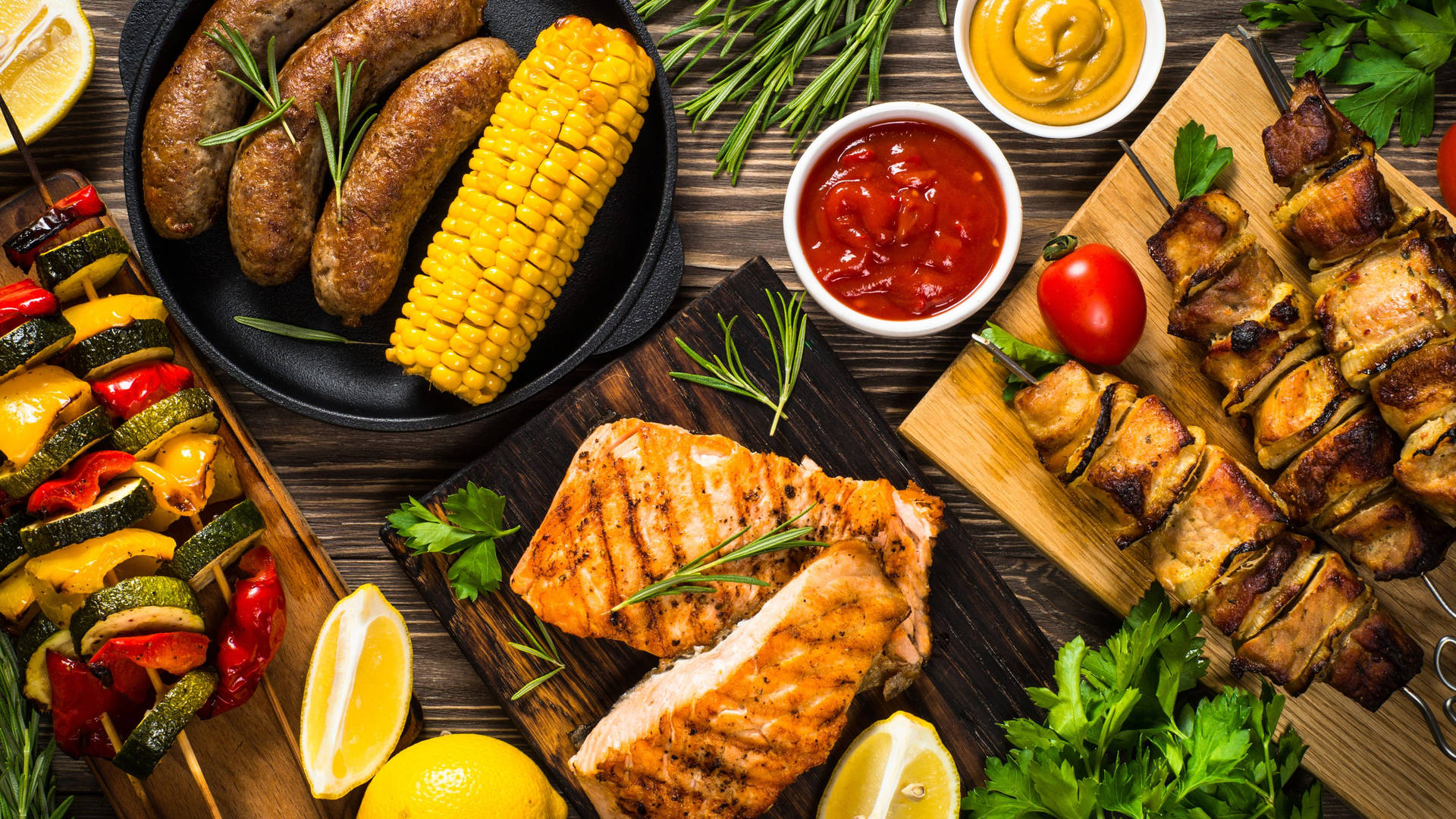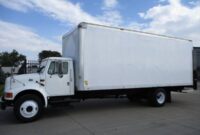Food Truck Flags: Waving Your Way to Success pickup.truckstrend.com
In the vibrant, competitive world of mobile culinary delights, standing out is not just an advantage—it’s a necessity. Food trucks, by their very nature, are designed to be mobile, but their transient presence can sometimes make them hard to spot in a bustling market, a crowded festival, or even a familiar street corner. This is where the often-underestimated power of Food Truck Flags comes into play. More than mere decorative elements, these dynamic pieces of signage are silent, waving ambassadors for your brand, signaling your presence, announcing your cuisine, and beckoning hungry customers from afar.
Food truck flags are custom-designed banners typically made from durable, weather-resistant fabrics, mounted on flexible poles, and secured by various bases. They come in an array of shapes and sizes, each serving to maximize visibility and reinforce your brand identity. In an industry where first impressions are everything and visibility directly translates to sales, understanding and effectively utilizing food truck flags can be a game-changer for any mobile food business. They transform a truck into a landmark, a point of interest, and most importantly, a beacon for delicious food.
Food Truck Flags: Waving Your Way to Success
The Unsung Hero of Food Truck Marketing: Why Flags Matter
In the highly saturated food truck landscape, simply parking your truck isn’t enough. You need to capture attention, and quickly. Food truck flags excel at this, offering a multitude of strategic benefits:
- Unparalleled Visibility: Their height and movement make flags highly visible from a distance, cutting through visual clutter and drawing eyes that might otherwise miss your truck. At large events, a distinct flag can be the guiding light for customers searching for your specific offerings.
- Powerful Brand Reinforcement: A well-designed flag acts as a mobile billboard. It prominently displays your logo, brand colors, and even a glimpse of your culinary theme, solidifying your identity in customers’ minds and building brand recognition with every gust of wind.
- Attracting Foot Traffic: The vibrant colors and gentle sway of a flag naturally draw curiosity. It signals "open for business" and creates an inviting, festive atmosphere, encouraging passersby to approach and explore your menu.
- Navigational Aid: At large, sprawling events or in busy urban environments, a unique flag can serve as an easy landmark. Customers who have heard about your truck or seen your social media can quickly spot your flag and navigate directly to you.
- Cost-Effective Advertising: Compared to traditional advertising methods, food truck flags offer a relatively low upfront cost for a long-term, high-impact marketing tool that works continuously as long as your truck is operating.

Types of Food Truck Flags: Choosing Your Waving Ambassador
The world of food truck flags offers diverse options, each with its own aesthetic and functional advantages. Selecting the right type depends on your brand’s style, your typical operating environments, and your budget.

- Feather Flags: Arguably the most popular choice for food trucks, feather flags are tall, slender, and designed to wave elegantly without tangling. Their distinct shape resembles a feather, and they offer a large, continuous print area for graphics and text.
- Pros: Excellent visibility, professional appearance, good wind resistance, won’t wrap around the pole.
- Cons: Can be relatively expensive, require a significant vertical clearance.

- Teardrop Flags: Similar to feather flags but with a more rounded, teardrop-like shape. They maintain tension well, ensuring your design is always visible, even in low wind.
- Pros: Unique, eye-catching shape, excellent display of graphics, good stability.
- Cons: Slightly less print area than a feather flag of comparable height, can be pricier.
- Rectangle/Banner Flags: These are the most traditional flag type, offering the largest rectangular print area. They are often hung horizontally or vertically from a pole.
- Pros: Maximum print space for detailed designs or extensive text, generally more cost-effective.
- Cons: Can wrap around the pole in low wind, may not stand out as much as dynamic shapes.
- Sail Flags: Often wider than feather flags, with a distinct, sail-like curve. They combine good visibility with a unique aesthetic.
- Custom Shop Flags/Small Pole Flags: Smaller, often rectangular flags used for specific, temporary messages like "Open," "Daily Special," "New Item," or even directional arrows. These can be attached directly to the truck or smaller poles.
Designing Your Food Truck Flag: More Than Just a Logo
A flag is only as effective as its design. A poorly designed flag can be confusing or simply ignored. Here are key principles for creating a flag that truly resonates:
- Clarity and Simplicity are Key: Remember, your flag will be seen from a distance, often by moving targets. Keep text minimal and concise. Your logo should be prominent and easily recognizable. Avoid clutter.
- Brand Consistency is Paramount: Your flag should seamlessly integrate with your existing brand identity—your truck’s wrap, menu design, and social media presence. Use consistent colors, fonts, and imagery.
- Vibrant, High-Contrast Colors: Choose colors that pop and create strong contrast to ensure readability and visual appeal. However, ensure they align with your brand palette.
- High-Quality Graphics: Always use vector graphics for your logo and any key images. This ensures your design remains crisp and sharp, regardless of the flag’s size, preventing pixelation.
- Consider Orientation: Feather and teardrop flags are designed for vertical layouts. Plan your design with this in mind to maximize impact.
- Strategic Messaging: Beyond your logo, consider a very short, impactful tagline or a single enticing word ("Tacos!", "Coffee!"). Avoid long sentences.
Practicalities of Food Truck Flag Ownership: Setup, Care, and Regulations
Owning a food truck flag involves more than just purchasing it. Proper setup, maintenance, and adherence to regulations are crucial for its longevity and effectiveness.
- Installation and Bases: The stability of your flag depends entirely on its base. Common options include:
- Ground Spikes: Ideal for soft surfaces like grass or dirt at festivals and parks.
- Cross Bases: Suitable for hard, flat surfaces like pavement or concrete. Often used with a water bag or sandbag for added stability.
- Water Bases/Sandbags: Heavy, fillable bases that provide excellent stability on any flat surface, crucial for windy conditions.
- Wall Mounts/Truck Mounts: Less common but useful for directly attaching smaller flags to your truck or a nearby structure.
- Always ensure your flag is securely mounted to prevent it from toppling over or becoming a hazard in strong winds.
- Durability and Materials: Most high-quality food truck flags are made from durable polyester fabric (e.g., 200 denier nylon or similar) designed to withstand outdoor elements. Look for flags with reinforced stitching and UV-resistant inks to prevent fading. Poles are typically made from lightweight, flexible fiberglass or aluminum.
- Maintenance:
- Cleaning: Periodically wash your flag with mild soap and water to remove dirt and grime. Air dry completely before storing.
- Storage: When not in use, store your flag and pole kit indoors in a dry, cool place to protect them from extreme weather, dirt, and potential theft.
- Regulations and Permits: This is a critical, often overlooked aspect. Many cities, counties, and event organizers have specific regulations regarding temporary signage, including flags. These can dictate:
- Size Restrictions: Maximum height or surface area.
- Placement: Distance from roads, sidewalks, or other vendors.
- Permits: Some locations may require a temporary sign permit.
- Always check with local authorities and event organizers beforehand to avoid fines or forced removal.
Maximizing Your Flag’s Impact: Tips and Strategies
To truly harness the power of your food truck flag, employ these strategic tips:
- Strategic Placement: Don’t just stick your flag anywhere. Position it where it will be seen most effectively: at the entrance to an event, at a busy intersection, or prominently near your serving window. Consider the direction of prevailing winds.
- Multiple Flags for Multiple Messages: Consider using a larger branding flag (feather or teardrop) with smaller, more specific flags (e.g., a "Daily Special" flag, an "Open" flag, or a flag for a popular dish).
- Dynamic Messaging: If you offer rotating specials, invest in smaller flags that can be easily updated or swapped out to highlight new menu items or limited-time offers.
- Lighting for Evening Events: If you operate after dark, consider external lighting for your flag to ensure it remains visible and continues to attract customers.
- Complement Other Signage: Your flag should work in harmony with your truck’s wrap, menu boards, and A-frame signs, creating a cohesive and compelling visual presentation.
- Test and Observe: Pay attention to how your flag performs in different locations and conditions. Do customers notice it? Does it help them find you? Adjust placement or even design based on your observations.
Challenges and Solutions
Even the best marketing tools come with potential challenges. Here’s how to address common issues with food truck flags:
- Wind Damage: Strong winds are the biggest enemy.
- Solution: Invest in heavy-duty poles and robust bases. In extreme winds, it’s best to lower or store your flag to prevent damage or injury.
- Theft or Vandalism: Flags can be targets, especially if left unattended.
- Solution: Use secure bases that are difficult to remove without tools. Always bring your flags inside overnight or when your truck is not actively operating.
- Fading: Prolonged sun exposure can cause colors to fade.
- Solution: Purchase flags made with UV-resistant inks. Store flags out of direct sunlight when not in use. Consider having a backup flag if you operate daily.
- Permit Issues: Unexpected regulations can cause problems.
- Solution: Proactively research local signage ordinances and communicate with event organizers well in advance. Always err on the side of caution.
- Cost: Quality flags can be an investment.
- Solution: View the flag as a long-term marketing asset. Shop around for reputable suppliers, but prioritize durability and print quality over the absolute lowest price.
Food Truck Flag Estimated Price Guide
Please note: Prices are highly variable based on supplier, materials, complexity of design, order quantity, and current market conditions. This table provides a general estimate for custom-printed flags.
| Flag Type | Size (Approx.) | Material | Base Type Options (Included/Extra) | Custom Design Fee (Optional) | Estimated Price Range (USD) | Notes |
|---|---|---|---|---|---|---|
| Feather Flag | Small (6-8 ft) | Durable Polyester | Ground Spike or Cross Base (w/ bag) | $25 – $75 | $75 – $150 | Most popular, high visibility. |
| Medium (9-12 ft) | Durable Polyester | Ground Spike or Cross Base (w/ bag) | $25 – $75 | $100 – $250 | Standard size for most trucks. | |
| Large (13-16 ft) | Durable Polyester | Ground Spike or Cross Base (w/ bag) | $25 – $75 | $150 – $350+ | Maximum impact, best for large events. | |
| Teardrop Flag | Small (6-8 ft) | Durable Polyester | Ground Spike or Cross Base (w/ bag) | $25 – $75 | $70 – $140 | Unique shape, good tension. |
| Medium (9-12 ft) | Durable Polyester | Ground Spike or Cross Base (w/ bag) | $25 – $75 | $90 – $220 | ||
| Large (13-15 ft) | Durable Polyester | Ground Spike or Cross Base (w/ bag) | $25 – $75 | $140 – $300+ | ||
| Rectangle Flag | Small (2×3 ft – 3×5 ft) | Durable Polyester | Pole w/ Grommets (base extra) | $20 – $60 | $50 – $120 | Classic banner style, large print area. |
| Medium (4×6 ft – 5×8 ft) | Durable Polyester | Pole w/ Grommets (base extra) | $20 – $60 | $80 – $180 | ||
| Small Shop/Message Flag | 12×18 in – 2×3 ft | Durable Polyester | Mini Pole or Suction Cup (often incl.) | $15 – $40 | $20 – $60 | For "Open," "Special," etc. Can be truck-mounted. |
| Additional Bases | N/A | Steel/Plastic | N/A | N/A | $30 – $70 (each) | Cross base, water bag, heavy-duty ground spike. |
| Replacement Poles | N/A | Fiberglass/Aluminum | N/A | N/A | $40 – $100 (each) | For damaged or lost poles. |
Note: Prices do not typically include shipping or expedited production fees. Bulk discounts are often available.
Frequently Asked Questions (FAQ) About Food Truck Flags
Q1: How long do food truck flags typically last?
A1: With proper care and depending on weather exposure, a high-quality food truck flag can last anywhere from 1 to 3 years. Constant exposure to harsh sun and strong winds will shorten its lifespan.
Q2: Can I use my food truck flag in high winds?
A2: While most flags are designed to be wind-resistant, it’s generally advisable to lower or store your flag in winds exceeding 20-25 mph to prevent damage to the flag, pole, or base, and to ensure safety.
Q3: What’s the best material for an outdoor food truck flag?
A3: Durable polyester fabrics, typically 200 denier, are the industry standard. They offer a good balance of durability, color vibrancy, and resistance to tearing and fading. Look for UV-resistant inks.
Q4: Do I need a permit to use a food truck flag?
A4: It depends on your local municipality and the event venue. Some cities have strict regulations on temporary signage size and placement, requiring permits. Always check with local planning departments and event organizers beforehand to avoid issues.
Q5: How do I clean my food truck flag?
A5: Most polyester flags can be gently hand-washed with mild soap and cold water. Avoid harsh detergents or machine washing, which can damage the fabric or fade the colors. Air dry completely before storing.
Q6: Where should I place my food truck flag for maximum impact?
A6: Place it where it’s highly visible from a distance and from key customer approach paths. Consider placing it near the busiest foot traffic, at the entrance to an event, or clearly visible from a main road. Ensure it doesn’t obstruct walkways or views.
Q7: What’s the main difference between a feather flag and a teardrop flag?
A7: The primary difference is their shape and how they display graphics. Feather flags are tall and slender, resembling a feather, and wave more freely. Teardrop flags have a more rounded, taut shape that keeps the graphic fully visible even in low wind, but they offer slightly less print area than a comparable feather flag.
Conclusion
In the competitive culinary landscape of food trucks, every detail counts. While the aroma of your food and the vibrancy of your truck wrap are undoubtedly crucial, the humble Food Truck Flag stands as an unsung hero of mobile marketing. It’s not just a piece of fabric on a pole; it’s a dynamic, attention-grabbing beacon that extends your brand’s reach, guides hungry customers to your location, and subtly communicates your presence with every gentle sway.
By strategically selecting the right type of flag, investing in thoughtful design, ensuring proper setup and maintenance, and understanding local regulations, food truck owners can unlock the full potential of this powerful visual tool. A well-placed and beautifully designed flag transforms your truck from just another vendor into a memorable destination. It’s a smart, cost-effective investment that continues to work for you, waving your way to greater visibility, increased customer traffic, and ultimately, sustained success in the bustling world of mobile gastronomy.



